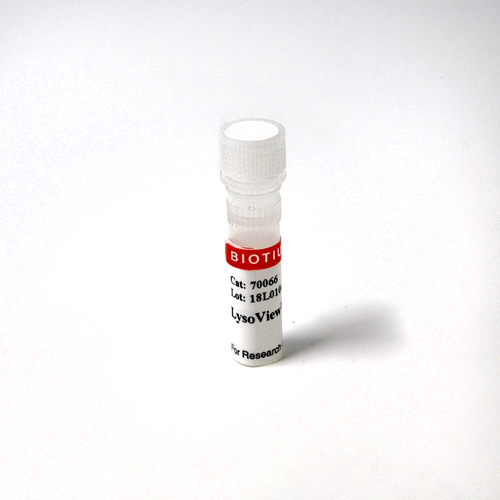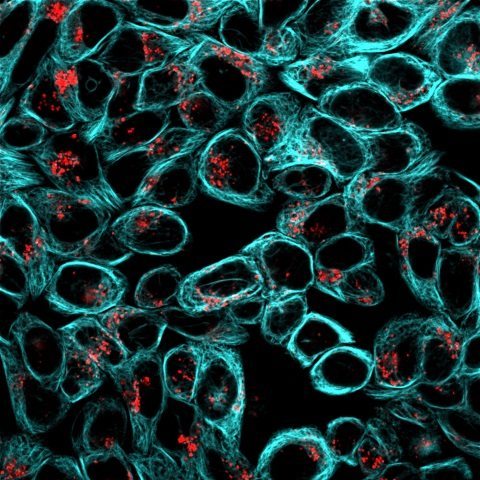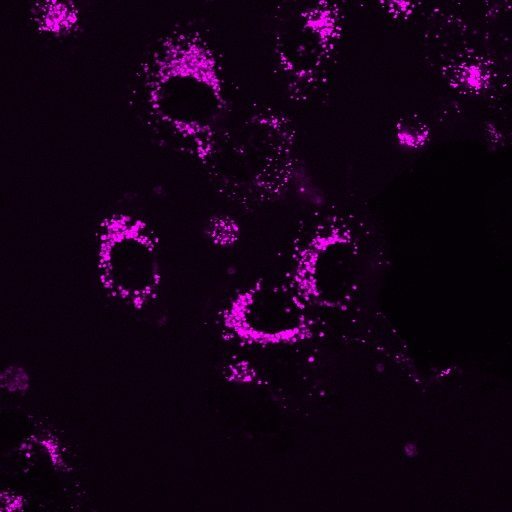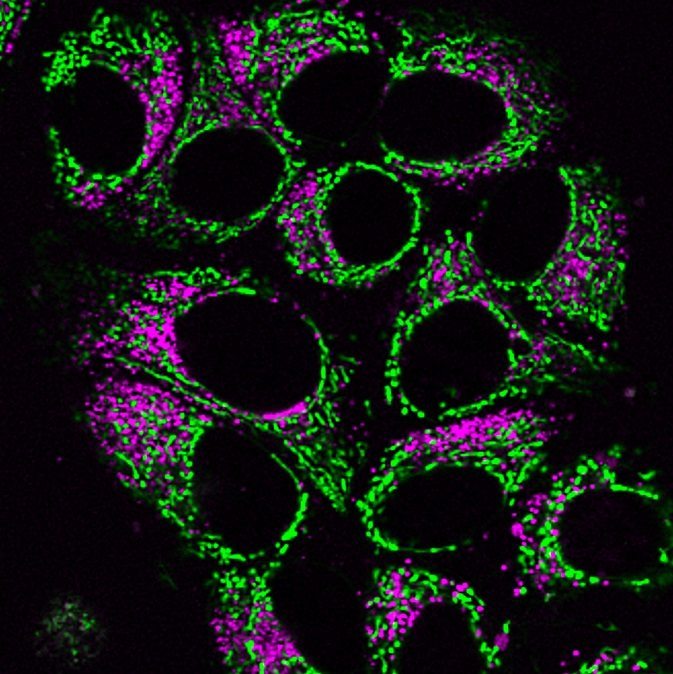LysoView™ Dyes
LysoView™ fluorescent dyes label lysosomes in live cells without a wash step, and are available in multiple colors with options for super-resolution imaging.
Please fill in the inquiry form and we will contact you shortly.
Wishlist updated! View wishlist
Product Description
LysoView™ dyes are useful for staining lysosomes in live cells.
- No-wash, fluorescent staining of lysosomes in live cells
- Non-toxic for real-time live-cell imaging
- Lower background than LysoTracker® dyes
- Dye options for super-resolution imaging
- Color choices from blue to far-red, plus a unique NIR dye
LysoView™ dyes are fluorescent stains for imaging lysosome localization and morphology in live cells. The dyes accumulate in low pH organelles, resulting in highly specific staining without the need for a wash step. LysoView™ staining is non-toxic, and can imaged over the course of days, even after dye washout for some dye options (see the Product Information Sheet for more information).
LysoView™ 540 and LysoView™ 633 exhibit pH-sensitive fluorescence, further enhancing the specificity of staining. LysoView™ 488 has been validated in super-resolution imaging by SIM (Ref. 7), while LysoView™ 650 fluorophore is compatible with super-resolution imaging by SIM and STED.
Note: LysoView™ 540 has limited photostability, and may not be suitable for all microscopy applications. LysoView™ 550 is a bright and more photostable choice.
Also see our unique UV-activatable Light-On LysoView™ 555, which is non-fluorescent until it is reversibly activated by UV light.
LysoView™ Dyes
| Product | Catalog number | Size | Abs/Em (nm) (pH ≤ 5) | Detection channel | Features |
|---|---|---|---|---|---|
| LysoView™ 405, 1000X in DMSO | 70066-T | 10 uL | 318, 400/ 464 | DAPI, Pacific Blue™ | Blue fluorescent lysosome stain |
| 70066 | 50 uL | ||||
| LysoView™ 488, 1000X in DMSO | 70067-T | 10 uL | 496/526 | GFP, FITC | Green fluorescent dye validated in SIM |
| 70067 | 50 uL | ||||
| LysoView™ 540, 1000X in DMSO | 70061-T | 10 uL | 540/634 | TRITC, Cy®3, PE | Orange, pH- sensitive fluorescence** |
| 70061 | 50 uL | ||||
| LysoView™ 550, 1000X in DMSO | 70083-T | 10 uL | 542/567 | TRITC, Cy®3, PE | Bright & photostable orange dye |
| 70083 | 50 uL | ||||
| LysoView™ 594, 1000X in DMSO | 70084-T | 10 uL | 585/634 | Texas Red® | Bright & photostable red dye |
| 70084 | 50 uL | ||||
| LysoView™ 633 (lyophilized solid) | 70058-T | 1 vial* | 634/657 | Cy®5, APC | Far-red, pH-sensitive fluorescence |
| 70058 | 10 vials* | ||||
| LysoView™ 640, 1000X in DMSO | 70085-T | 10 uL | 640/671 | Cy®5, APC | Bright & photostable far-red dye |
| 70085 | 50 uL | ||||
| LysoView™ 650, 1000X in DMSO | 70059-T | 10 uL | 650/675 | Cy®5, APC | Photostable far-red dye compatible with SIM, STED |
| 70059 | 50 uL | ||||
| LysoView™ 680, 1000X in DMSO | 70086-T | 10 uL | 674/711 | Cy®5.5 | Unique near-IR lysosome stain |
| 70086 | 50 uL |
** LysoView™ 540 has limited photostability and may not be suitable for all microcopy applications.
Cy Dye is a registered trademark of Cytiva; Pacific Blue is a trademark and Texas Red is a registered trademark of Thermo Fisher Scientific.










